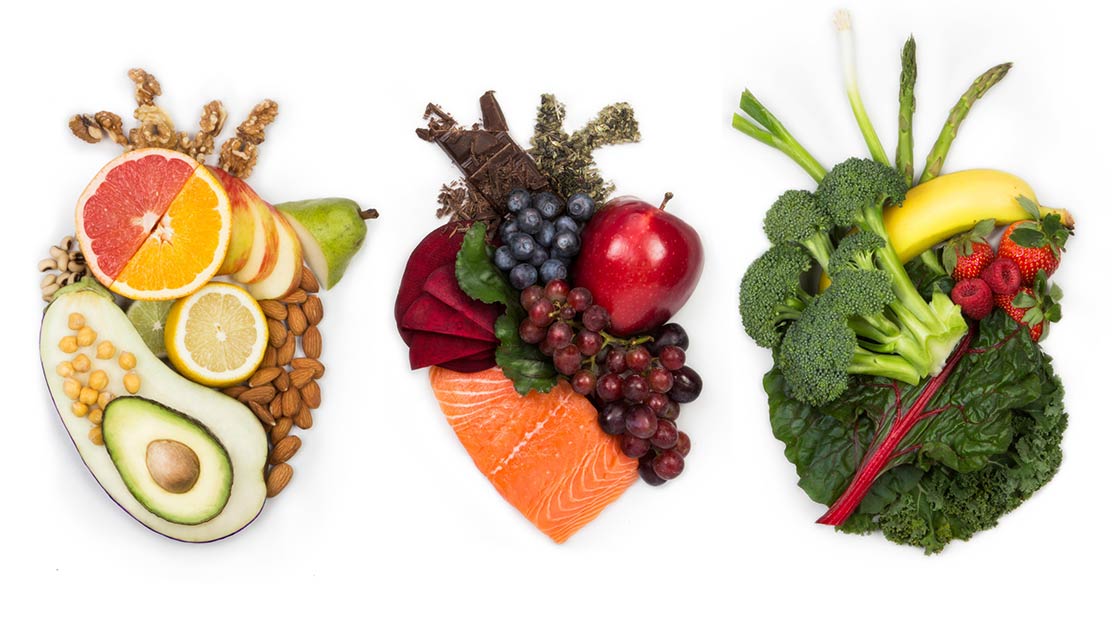Foods to Lower Cholesterol

When your cholesterol levels are elevated, so are your health risks.
An unhealthy cholesterol level increases your chance of heart disease, heart attack, and stroke. To bring your cholesterol levels to a healthy range, your health care provider may suggest making lifestyle changes, including reaching and maintaining a healthy weight, quitting smoking, getting regular exercise, and eating a heart-healthy diet. Here you'll learn more about how diet affects cholesterol, including what to eat to help get your cholesterol levels closer to goal.
Cholesterol basics
Cholesterol tends to get a bad rap, but know that our bodies actually need this fatty substance to build cells. There are two main types of cholesterol: low-density lipoprotein (LDL or "bad" cholesterol) and high-density lipoprotein (HDL or "good" cholesterol). High levels of LDL cholesterol can cause plaque (fatty deposits) to build up in your blood vessels, which can create a blockage that restricts blood flow. This can lead to a heart attack or stroke. HDL cholesterol helps protect the arteries by carrying away excess LDL cholesterol.
The link between food and cholesterol levels
Your liver makes all the cholesterol your body needs, but certain foods also contain cholesterol. What's more, these foods also often contain saturated fat, and this type of unhealthy fat causes the liver to produce more cholesterol. In some cases, extra cholesterol can raise the LDL cholesterol in your body to unhealthy levels. Triglycerides are another type of blood fat that's often measured with cholesterol. The body converts excess calories into triglycerides and stores them in fat cells.
What are the worst foods for high cholesterol?
Foods that are high in saturated fats and trans fats can raise the amount of LDL cholesterol in the blood. Saturated fat is found mostly in animal products, including fatty cuts of meat, poultry with skin, and full-fat dairy products, and certain tropical oils, such as coconut and palm oils. Trans fats are mainly found in foods made with hydrogenated oils, like margarine or shortening. Examples include baked goods, fried foods, and other processed foods. Trans fats also naturally occur in some meats and dairy products.
What are foods high in cholesterol?
Foods that are high in dietary cholesterol, such as fatty meats and full-fat dairy products, are often the same foods that are high in saturated fat. The relationship between dietary cholesterol and blood cholesterol is complex, but for heart health, it's best to consume as little dietary cholesterol as possible. This is because curbing your intake of dietary cholesterol cuts how much saturated fat you eat.
Which foods reduce cholesterol?
To help combat high levels of bad cholesterol in the blood, eat foods that contain fiber, such as fruit, vegetables, beans, lentils, and whole grains. There are two types of fiber: soluble and insoluble. Both kinds are important for health, but soluble fiber is known to help lower LDL cholesterol and may decrease the risk of heart disease. Oats, kidney beans, Brussels sprouts, asparagus, sweet potatoes, apples, oranges, and soy foods all come with soluble fiber. In addition, foods that contain plant sterols and stanols, including vegetable oils, nuts, seeds, and whole grains, can also help reduce LDL cholesterol levels. Oily fish and other foods high in omega-3 fatty acids, including walnuts, flaxseeds, and canola oil, can aid in lowering triglyceride levels.
Healthy eating tips for lower cholesterol
To help keep cholesterol in check, choose recipes that incorporate fruits, vegetables, whole grains, and lean sources of protein. Follow these tips when planning meals:
- Eat a variety of colorful fruits and vegetables. Try roasting veggies with a tiny bit of olive oil and season them with herbs and spices rather than frying them in sauces.
- Opt for whole grains instead of "white" grains. Go for barley, oatmeal, brown rice, wheat bread, and whole grain pasta.
- Limit meats, especially processed meats, including salami, sausage, hot dogs, fattier cuts of meat, and dark meat.
- Trade meats for plant-based or vegetarian sources of protein, like beans, lentils, and soy foods, for breakfast, lunch or dinner.
- Strive to eat eight ounces of oily fish per week, such as salmon, tuna, mackerel, herring, and trout.
- Swap out full-fat cheese, yogurt, milk, and other dairy products for nonfat or low-fat varieties.
- Cook with a small amount of liquid vegetable oils rich in healthier monounsaturated or polyunsaturated fats, such as olive, canola, and sunflower oils—instead of solid fats, like butter, shortening, and lard, which contain unhealthy saturated fat.
- Avoid foods that contain hydrogenated oils, such as fried food, baked goods, and other highly processed foods.
In general, following a heart-healthy diet rich in plant foods, whole grains, and lean sources of protein is best for cholesterol levels. Do not try any extreme diets that significantly reduce the intake of or omit any food groups, such as the ketogenic or keto diet, without talking to your health care provider first. Your provider may have specific nutrition guidance for you based on your cholesterol levels and other factors.
Published on May 25, 2020
Sources:
"Cooking to lower cholesterol," American Heart Association. Web. 4 Feb 2020. http://www.heart.org/HEARTORG/Conditions/Cholesterol/PreventionTreatmentofHighCholesterol/Cooking-for-Lower-Chlolesterol_UCM_305630_Article.jsp#.XjCBKUdKg2w
"What is cholesterol?" Academy of Nutrition and Dietetics. Web. 4 Feb 2020. https://www.eatright.org/health/wellness/heart-and-cardiovascular-health/what-is-cholesterol
"Control your cholesterol," American Heart Association. Web. 4 Feb 2020. https://www.heart.org/en/health-topics/cholesterol/about-cholesterol
"Dietary guidelines for Americans: 2015-2020," National Institutes of Health. Web. 6 Feb 2020. https://health.gov/dietaryguidelines/2015/guidelines/chapter-1/a-closer-look-inside-healthy-eating-patterns/
"Cholesterol myths and facts," Centers for Disease Control and Prevention. Web. 6 Feb 2020. https://www.cdc.gov/features/cholesterol-myths-facts/index.html